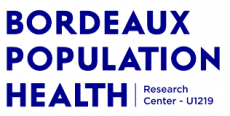Anti-amyloid treatments in Alzheimer’s disease: elegance, evidence and ethics
Résumé
The so-called "amyloid cascade hypothesis" provides an elegant explanation of Alzheimer's disease (AD), has motivated the amyloid-lowering therapeutic strategy, and led to the elaboration of a rich experimental and conceptual toolkit for the field to progress. But it might be incorrect. The scientific evidence base supporting the efficacy and safety of current anti-amyloid antibody treatments in AD is weak. Nevertheless, we argue that there is a bias towards the amyloid-lowering therapeutic strategy amongst key opinion leaders in the research and advocacy communities. To demonstrate this, we first focus on the AD lexicon: while any accrual of amyloid on a brain PET scan can now permit diagnosis/definition of AD, lowering positron emission tomography (PET) amyloid is considered disease modification, and treatment-induced side-effects are hidden behind neutral-sounding acronyms: ARIA (amyloid-β (Aβ)-related imaging abnormalities: brain bleeding and swelling) and ARPA (amyloid-β (Aβ) removal-related pseudo-atrophy: brain shrinkage). Second, we underline that drugmakers did not test anti-amyloid antibodies against the best proven interventions and did not adequately inform trial participants of risks, thus violating research ethics of the Declaration of Helsinki on 2 counts. In conclusion, we are critical of over-reliance on the idea that PET amyloid-lowering treatments for AD are a therapeutic revolution as claimed, and consider that optimism does not excuse a lack of scientific, regulatory, and ethical integrity. We argue for rigorous, properly controlled (e.g. donepezil) anti-amyloid trials demonstrating cognitive and functional benefit before accepting amyloid-lowering drugs as the new standard of care for AD patients.
Domaines
Santé publique et épidémiologie| Origine | Fichiers éditeurs autorisés sur une archive ouverte |
|---|



